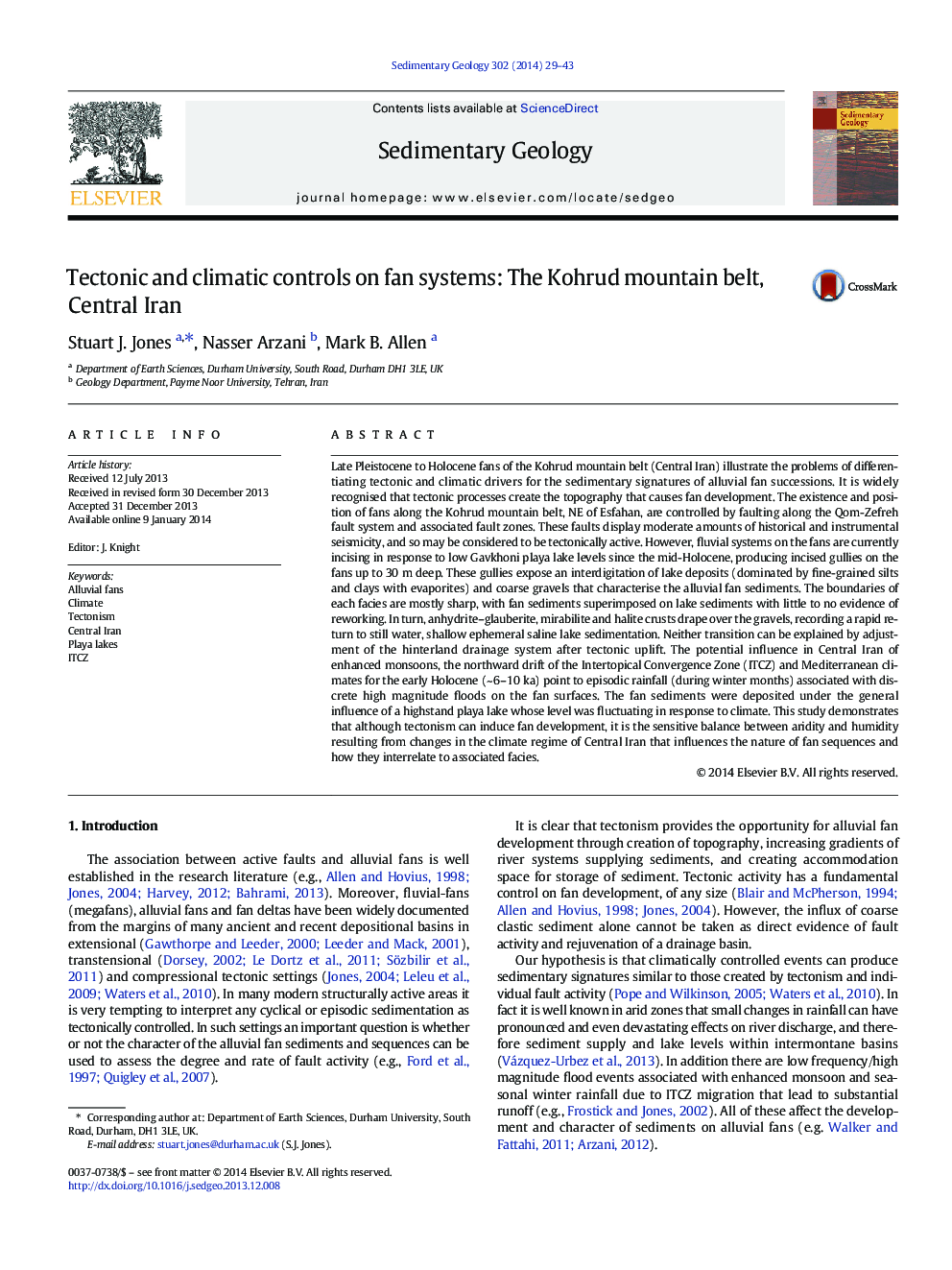| کد مقاله | کد نشریه | سال انتشار | مقاله انگلیسی | نسخه تمام متن |
|---|---|---|---|---|
| 4689457 | 1636061 | 2014 | 15 صفحه PDF | دانلود رایگان |
Late Pleistocene to Holocene fans of the Kohrud mountain belt (Central Iran) illustrate the problems of differentiating tectonic and climatic drivers for the sedimentary signatures of alluvial fan successions. It is widely recognised that tectonic processes create the topography that causes fan development. The existence and position of fans along the Kohrud mountain belt, NE of Esfahan, are controlled by faulting along the Qom-Zefreh fault system and associated fault zones. These faults display moderate amounts of historical and instrumental seismicity, and so may be considered to be tectonically active. However, fluvial systems on the fans are currently incising in response to low Gavkhoni playa lake levels since the mid-Holocene, producing incised gullies on the fans up to 30 m deep. These gullies expose an interdigitation of lake deposits (dominated by fine-grained silts and clays with evaporites) and coarse gravels that characterise the alluvial fan sediments. The boundaries of each facies are mostly sharp, with fan sediments superimposed on lake sediments with little to no evidence of reworking. In turn, anhydrite–glauberite, mirabilite and halite crusts drape over the gravels, recording a rapid return to still water, shallow ephemeral saline lake sedimentation. Neither transition can be explained by adjustment of the hinterland drainage system after tectonic uplift. The potential influence in Central Iran of enhanced monsoons, the northward drift of the Intertopical Convergence Zone (ITCZ) and Mediterranean climates for the early Holocene (~ 6–10 ka) point to episodic rainfall (during winter months) associated with discrete high magnitude floods on the fan surfaces. The fan sediments were deposited under the general influence of a highstand playa lake whose level was fluctuating in response to climate. This study demonstrates that although tectonism can induce fan development, it is the sensitive balance between aridity and humidity resulting from changes in the climate regime of Central Iran that influences the nature of fan sequences and how they interrelate to associated facies.
Journal: Sedimentary Geology - Volume 302, 1 April 2014, Pages 29–43
